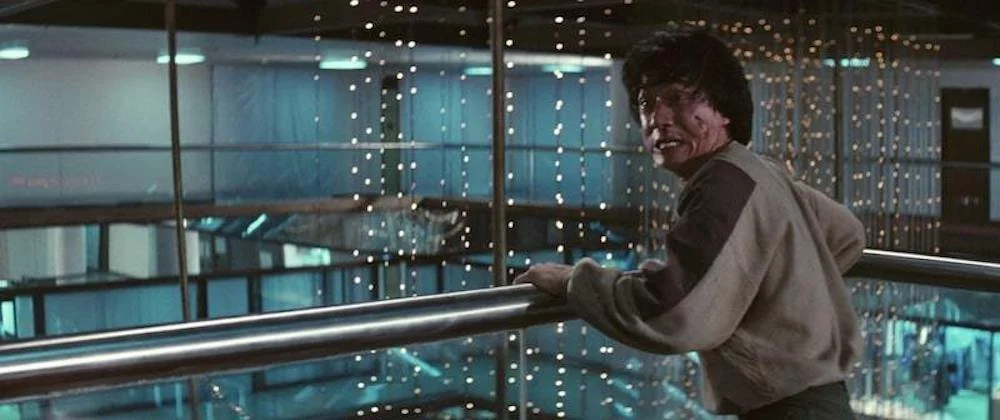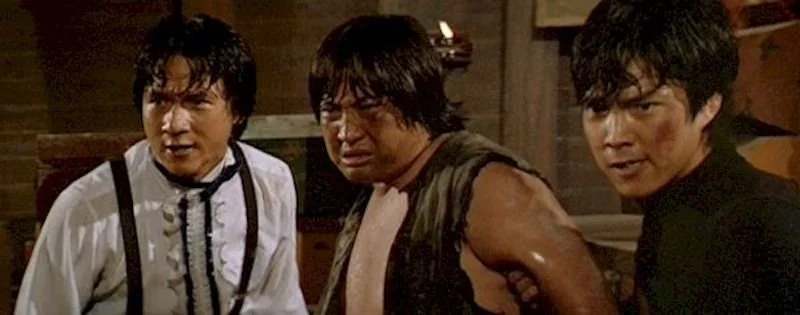The Art Of Stunts And Being Yourself
From January 17 through January 21, Neon Splatter is celebrating all things Jackie Chan. His movies, his many other projects, and his impact on film as well as film lovers. This is #JackieChanuary.
In the beginning of 2020, when the pandemic hit and lockdown protocol was initiated, the world turned to finding hobbies, anything to fill the void, but I kept doing what makes me happy: watching movies. It was during this void that action movies entered the picture.
Prior to the pandemic, I occasionally watched action films but never really dug deep into them and certainly did not explore what the genre had to offer outside of the United States. I was missing out. From the devilishly handsome suaveness of Scott Adkins, to the grace of Michelle Yeoh, to the never aging and swiftness of Donnie Yen, to the Thai artistry of Tony Jaa—I was enamored by everything I saw. However, one individual stood out to me above the others: the legendary Jackie Chan whose work, and especially his stunts, blew my mind.
Starting in 1976, the Jackie Chan Stunt Team was a small but talented group of close friends of Chan and has since expanded internationally albeit keeping a small stature. Jackie’s stunt team has made a huge impact on the movies they have worked on and in action cinema as a whole.
PROJECT A put the group on the map and the world has been blessed with their artistry and hard work ever since.
There have been other stunt teams that have also flourished, but we can credit Chan for defining and refining this concept.
MY STUNTS is a 1999 documentary that shows how Chan conceptualizes his stunts with his team. He creates a concept, plans the moves, then devizes the action through practice and practicality. If you have watched anything Chan has done, a lot of choreography utilizes items in the vicinity to heighten the theatrics of a scene. Whether it’s using a ladder to dispatch bad guys in FIRST STRIKE, or alcohol and its many uses in DRUNKEN MASTER, fighting sequences in these films are master classes in utilizing any and everything around performers to turn a normal fight scene into something much more.
This is part of who Chan is, as he prefers comedy over outright violence. In MY STUNTS, Chan shows an example of this by using a small stool. He saws down the joints of the stool, areas where wood meets each other, so it will break easily when kicked. The stool also has baby powder on areas and is attached to a string. When the stool is kicked, the strings throw the stool backwards, alluding to a larger impact while the baby powder appears like flying sawdust.
Scenes like this would be filmed at a wide angle for dramatic effect and to hide the details of the stunt. Chan is the low budget king and most are ideas born from practicality and necessity. This really shows when it’s compared to the United States’ cinematic stunt work, often a jumbled mess of f/x, close ups, and quick cuts. Chan loves showcasing the stunt work without the fluff of visual gimmickry or harried pacing. While the broad specifics of what Jackie does in his movies seem evident, this documentary really focuses on the details of these scenes.
However, there are times where Chan defies what Western audiences are expecting. As noted, Chan is huge on practicality. Due to budgeting, the more that can be done without employing a green screen, the better (and cheaper). Chan said he wants the audience to feel like they are in the movie when the stunt is happening. Personally, the stunt that comes to mind is in his iconic mall scene in POLICE STORY where Chan slides down an exploding light pole fixture in the center of a three-story mall. The co-writer/co-director/stunt coordinator/leading man fainted twice during this stunt and had third degree burns on his hands to produce an otherworldly spectacle rightfully highly praised by many. You can’t help but watch in complete awe.
Another insane stunt has to be his fight scene on top of the Willemswerf Building in the Netherlands in the WHO AM I? Chan decided that fighting on top of the building and close to edges was a great filmmaking idea. It’s impossible to fake the danger that faced him and his stunt team.
But don’t worry, he took it one step further by deciding to slide down the building’s glass structure as a getaway. Crazy, for sure. Reckless, perhaps. But it adds a unique and unbridled sense of tension to the scene.
Jackie Chan’s stunts are beautifully choreographed dance numbers that throw in fighting moves for good measure.
With the precise planning and arrangement, we’re shown pure art in motion. It takes a lot of preparation, composition, and talent to make these sequences as spontaneous as they do. Of course, it wouldn’t be martial arts without the use of hands and feet and I would be doing a disservice to Chan’s talent if I didn’t mention one of the best hand-to-hand combats from the ‘80s. Benny “The Jet” Urquidez is a talented martial artist with hands so quick, that if you blink, you might miss it. In WHEELS ON MEALS, Chan and The Jet fight it out in a long, almost six-minute brawl. As the duel progresses, Chan learns how his counterpart strategizes and acts, changes his plan of attack, and executes it with finesse.
It’s visual storytelling in its purest form as the audience watches the filmmaker’s concepts come to life in seemingly real time. It is unquestionably one of the most intense fights I have seen on screen and The Jet may be the one person Chan has fought on film that, to me, could have actually injured him if they had decided to really go at it. I dare anyone to watch the scene without having to remove their jaw from the floor at its conclusion.
Jackie Chan revolutionized the face of Hong Kong action cinema, but also cinema as a whole, and I do not think anyone would argue with this statement. The world is truly lucky to have him and his talent. Watching his movies is energetic, hilarious, and encapsulating. This is mostly a result of practice and surrounding yourself with a team that has the same perspective and values toward the “art” aspect of the martial arts. In MY STUNTS, Chan says that is very important to be yourself. This motto not only pertains to anyone wanting to get into stunting, but also to life in general in order to forge a path forward. “Just be yourself.”
Thanks, Jackie Chan, for the movies and imprinting indelible memories in the lives of your audience. We should all be so lucky.






